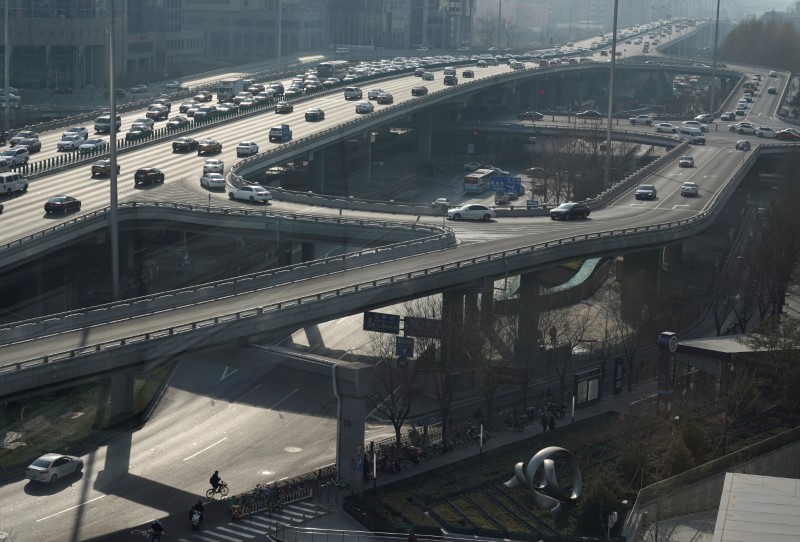By Gabriel CROSSLEY
BEIJING, Jan 22 (Reuters) - About two-thirds of China's provinces, regions and municipalities have cut their 2020 growth targets from last year, despite easing trade tensions with the United States.
The lower regional targets reinforce expectations of a further slowdown in the world's second-largest economy, after gross domestic product (GDP) expanded at its slowest pace in nearly three decades in 2019, weighed down by weak domestic and global demand.
Of China's provincial-level regions, 22 including Beijing, Guangdong, Zhejiang, Henan, Hainan, and Fujian, set lower growth targets this year compared to last, a similar number to last year.
Beijing, Shanghai, and the southern export hub of Guangdong all dropped their targets from 6-6.5% growth to "around 6%" in 2020, in line with the expected change to the national target.
This year is seen as crucial for the ruling Communist Party to fulfill its goal of doubling GDP and incomes in the decade to 2020.
At least 11 provincial-level regions missed their 2019 GDP targets, according to preliminary statistics released by local governments.
Targets for 2020 ranged from around 5% growth - for the northeastern province of Heilongjiang and the northern city of Tianjin - to around 9% growth for the Tibet Autonomous Region.
Policy sources have told Reuters that Beijing plans to set a lower national growth target of around 6% this year from last year's 6-6.5%, relying on increased infrastructure spending to ward off a sharper slowdown.
Key national targets are due to be announced in March. Growth cooled to 6.1% in 2019, the weakest in nearly 30 years, and analysts polled by Reuters expect it will cool to 5.9% this year even with additional stimulus measures.
The United States and China signed a Phase 1 deal earlier in January, marking a significant de-escalation but not an end to a dispute that has threatened to derail global economic growth. Many of the tit-for-tat tariffs the two sides imposed remain in place.
China has said it will unify the way it calculates provincial economic output from early 2020, amid scepticism about the reliability of the data, but it remains unclear how this will affect growth figures.
REGIONAL DIFFERENCES
So far, six provincial-level regions, largely in northern China, have kept their targets the same as last year. Xinjiang, Inner Mongolia, Gansu, Hebei, Jilin and Chongqing have all set targets that match 2019's, of between 5% and 6.5% growth.
Just one region, Tianjin, raised its growth target. Sichuan and Yunnan have yet to release their targets.
"Much of the national slowdown last year was driven by exports which will have weighed on the south and east more," said Julian Evans-Pritchard, senior China Economist at Capital Economics, in an email to Reuters.
For all of 2019, China's total exports rose 0.5%, well off a near 10% gain in 2018, reflecting weaker U.S. sales amid the escalating trade war.
"Heavy industry turned out to be quite resilient last year thanks to a pick-up in property construction and so the northern provinces may not have seen growth slow as much, hence the unchanged targets," Evans-Pritchard said.
Of the six provincial-level regions keeping growth targets steady, two missed their targets for last year -- Inner Mongolia and Jilin.
Relatively richer coastal provinces are more comfortable with lower, "high-quality" growth, but less-developed northern and north-eastern ones are less so, Louis Kuijs, head of Asia economics at Oxford Economics, said in an email.
Targets are "more about ambitions, rather than forecasts, and about how important growth is compared to other considerations," said Kuijs.
